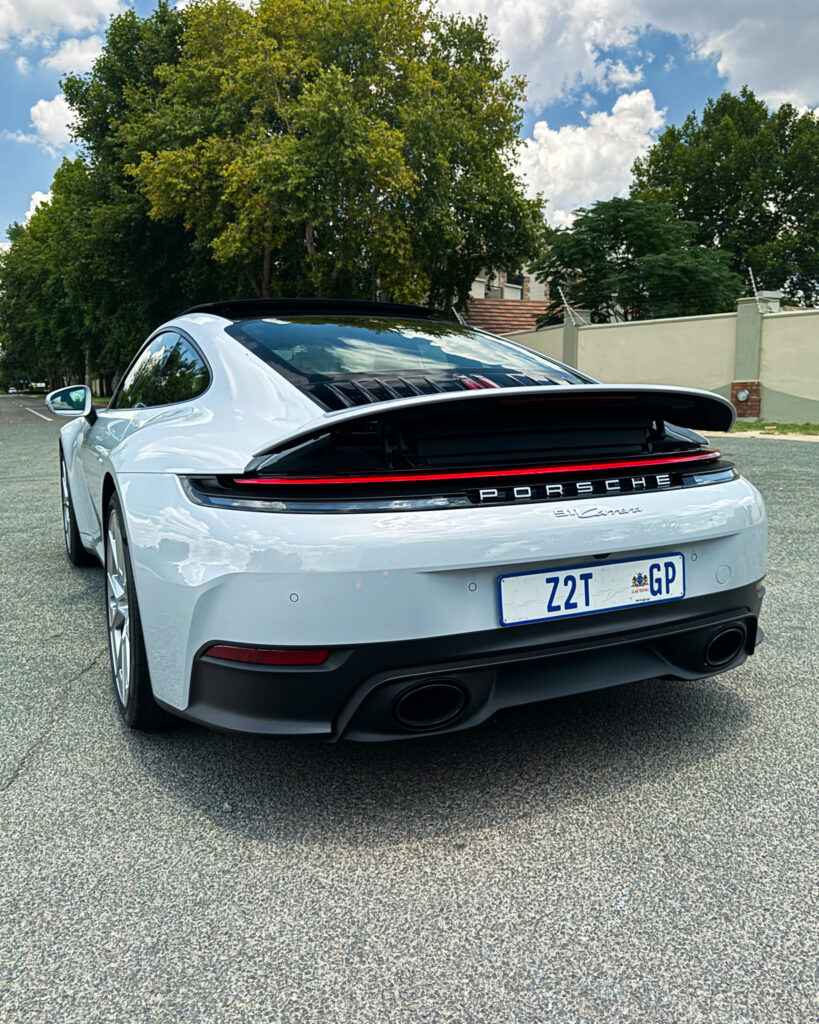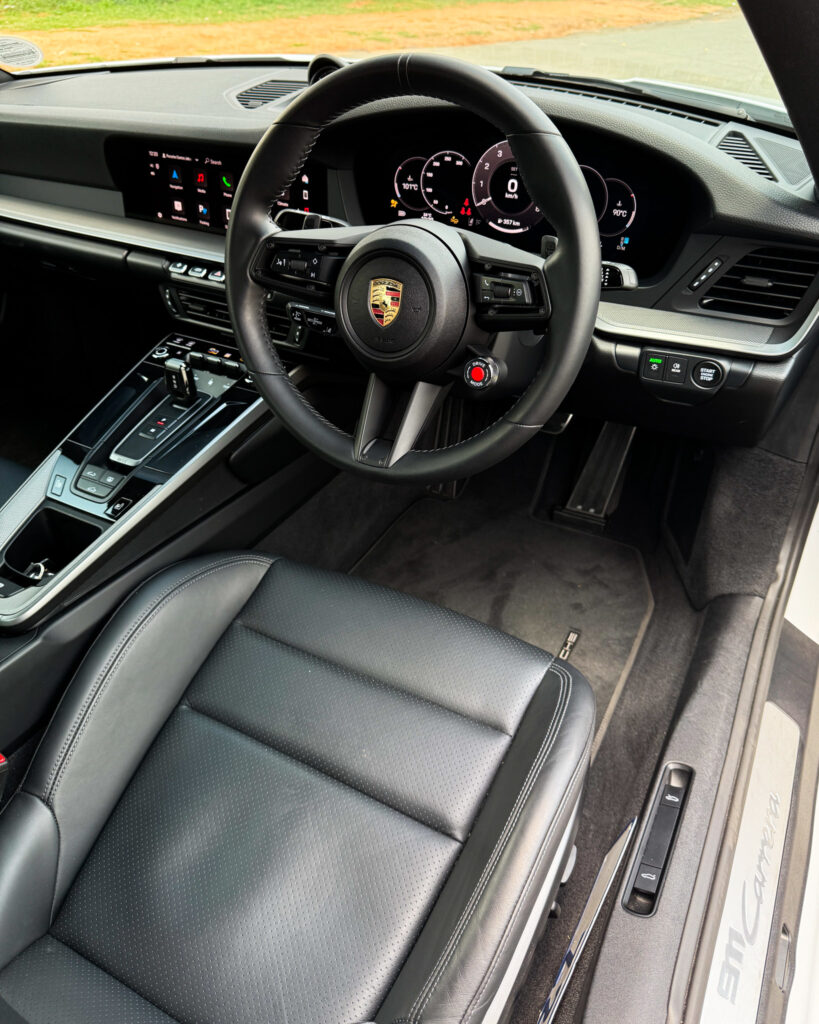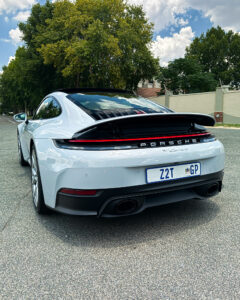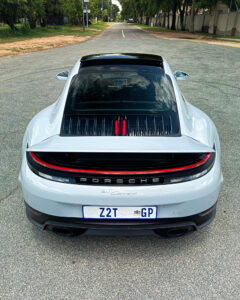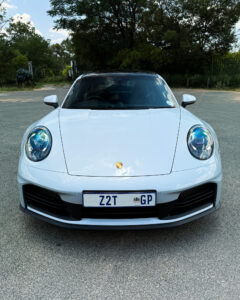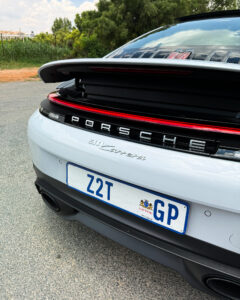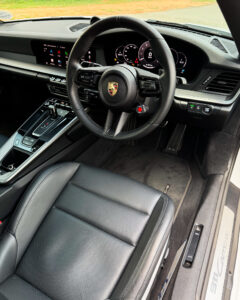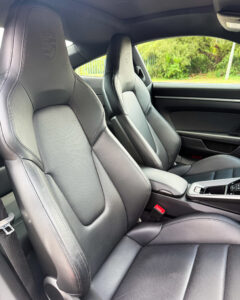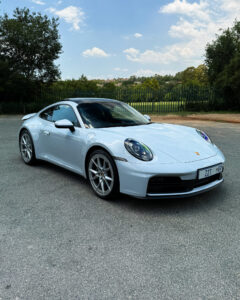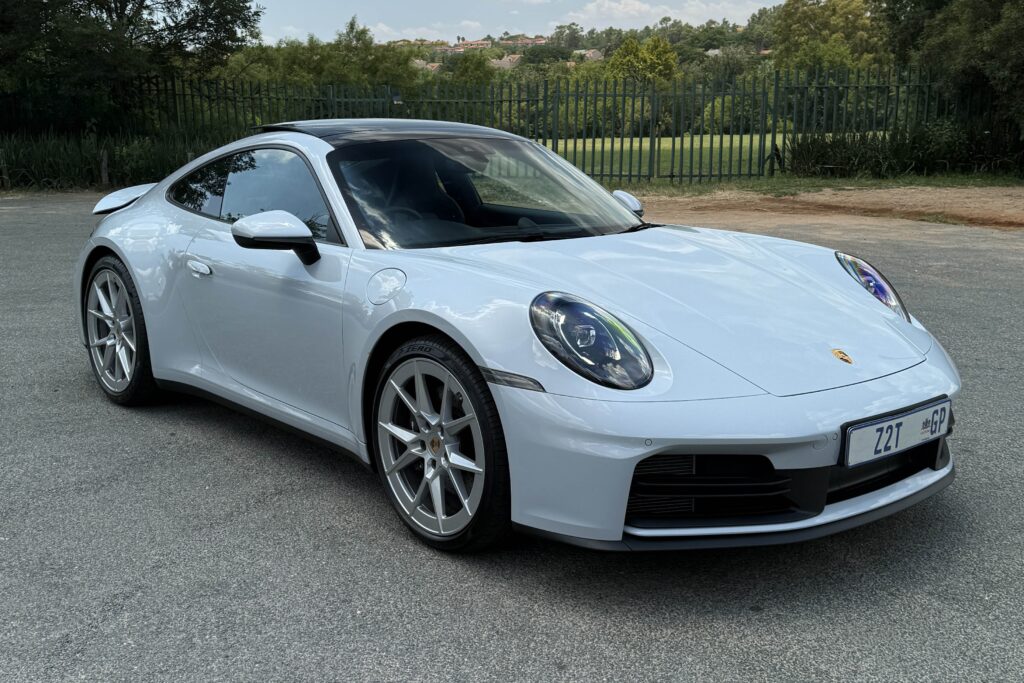
Having driven a host of 911s over the years. this was actually the first time ever behind the wheel of their entry-level offering and I could not wait to see what R2,5m gets you from the sports car gurus in Stuttgart.
As usual, the upgrades from 992.1 to 992.2 are subtle. The 3.0-litre flat-six engine now utilizes the turbochargers previously found on the GTS, resulting in a slight power increase (389 hp and 450 Nm) and improved efficiency. Other enhancements include larger standard brakes, a revised front fascia, and an updated interior featuring a digital instrument panel, push-button start, and enhanced connectivity. While some may miss the traditional analogue tachometer and ignition switch, the updated cabin remains a high-quality space.
You now also get new adaptive dampers and a fair chunk more equipment as standard justifying the increase in price.
Porsche has also made the very handy mode dial standard across the 911 range which gives all drivers quick access to different driving modes, regardless of whether they’ve opted for the Sports Chrono package. If you do opt for Sports Chrono then you are gifted with proper launch control which will see you hit 100 km/h in 3.9 seconds.
So then, how is it to drive? This particular test car was kitted with the Sports Chrono package, and as expected, the launch control system is remarkable. Even after driving much more powerful cars lately, it does not feel slow or leave you wanting more power.
The engine is a joy to engage with. It offers more than enough low-end torque for everyday driving, yet truly comes alive when pushed to its redline which of course is accompanied by the signature flat-six engine note.
The rear weight bias results in excellent traction exiting tight corners and the steering gives great feedback of what is going on up front. Pop traction into Sports and you get more than enough oversteer to keep you entertained on your toes.
While I expected the new dampers to provide a touch softer ride the the trade-off is tight body control, particularly in Sport Plus mode, and minimal body roll during cornering as we have come to expect from a 911.
It is business as usual inside but more digitised compared to the car it replaces. You sit low and purposefully in the Carrera. A thin-rimmed steering wheel frames a fully digital instrument panel, which replaces the traditional central analogue tachometer. While functionally modern, this digital display lacks the aesthetic charm of its analogue predecessor. Other interior updates include a redesigned lever for the driver assistance systems, such as cruise control, and a push-button engine start, replacing the previous ignition switch.
Does this version of the 911 represent the ideal all-around model? A strong case can be made, considering its blend of performance, driver engagement, and practicality. However, those who have experienced the satisfaction of a Porsche manual transmission, the enhanced performance of a GTS, or the thrilling sound of a GT3 engine might find the additional cost justified.
The base Carrera shouldn’t be viewed as a lesser 911. It offers ample performance, combining precision, stability, and even a degree of refinement. While its price has increased over time, requiring careful consideration of optional extras, the 911 continues to excel as a versatile everyday sports car, now with even greater polish and sophistication.

